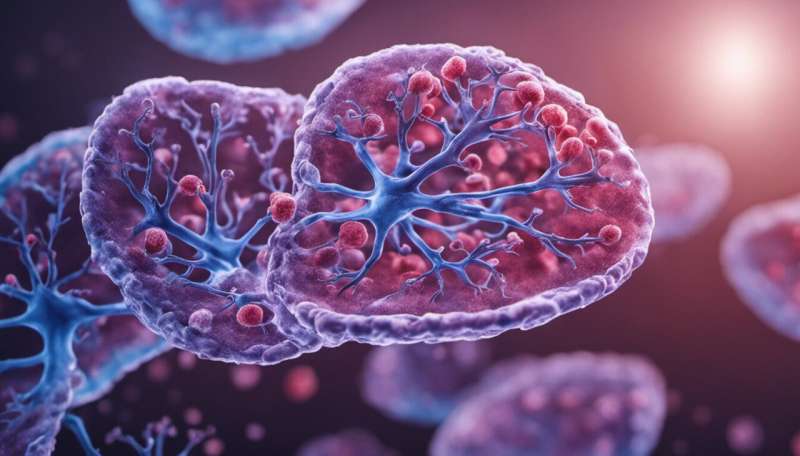This article has been reviewed according to Science X's editorial process and policies. Editors have highlighted the following attributes while ensuring the content's credibility:
fact-checked
peer-reviewed publication
trusted source
proofread
Stem cell transplantation: Processes for restoration of immune system discovered

In stem cell transplants, which are used for the treatment of leukemia, the patient's hematopoietic system is eliminated and replaced by hematopoietic cells from donors. Even though the amount of complications occurring in this process is steadily decreasing due to medical progress, the exact mechanisms for the restoration of the immune system in these patients have not yet been conclusively clarified.
Researchers at MedUni Vienna, the CeMM Research Center for Molecular Medicine of the Austrian Academy of Sciences and the Ludwig Boltzmann Institute for Rare and Undiagnosed Diseases have now discovered processes that can contribute to the success of stem cell transplantation and to improving this therapy. The results of the study have just been published in the journal Clinical Immunology.
For their study, the research group led by Georg Stary from MedUni Vienna's Department of Dermatology and the CeMM Research Center for Molecular Medicine of the Austrian Academy of Sciences analyzed immune cells in the blood and skin of stem cell transplantation recipients. In sequential samples, the scientists discovered regulatory processes that are involved in restoring the balance of T cells in the immune system, which is relevant for the success of stem cell transplantation.
In particular, enzymes called histone deacetylases (HDACs) proved to be essential players in this process. The medicinal inhibition of HDACs is already successfully used in cancer therapy. In order to investigate a possible application of this approach after stem cell transplantation, the team administered HDAC inhibitors to isolated cells. "By inhibiting different classes of HDACs in isolated T cells from patients after stem cell transplantation, we could modulate the imbalance of T cell subsets," report first authors Ram Vinay Pandey and Johanna Strobl from the Department of Dermatology at MedUni Vienna.
Further findings regarding complications
Within the framework of the study, it was possible to gain further insights into graft-versus-host disease (GVHD), which can occur after stem cell transplantation. The analyses in blood and skin revealed a rapid recovery of immune cells that are of importance for GVHD (such as effector T cells), while the appearance of "protective" regulatory T cells was delayed.
On the other hand, the simultaneous examination of the transcriptome, i.e. all those genes that are actively read from the DNA, and the epigenome, the "readiness" of individual genes, showed strong differences between skin and blood cells. This imbalance between body tissues as well as regulatory and non-regulatory cell types could promote complications after stem cell transplantation, such as GVHD.
New approach for therapeutic options
Allogeneic hematopoietic stem cell transplantation is used as a therapy for patients with serious diseases of the hematopoietic system (e.g., acute leukemia). Following the replacement of the patient's diseased hematopoietic system with healthy hematopoietic cells from donors, about 40% of patients develop GVHD, which most commonly affects the skin.
"With the potential of HDAC inhibitors to modulate T cells after stem cell transplantation, we have discovered an innovative approach to influence the epigenetics of T cells at specific time points after stem cell transplantation and to increase the safety of the therapy," says Georg Stary about the research results, which will be tested in clinical trials in the next step.
"Our study underlines the importance of epigenetic regulators in restoring the immune system and shows new therapeutic possibilities for achieving T-cell balance after stem cell transplantation."
More information: Ram Vinay Pandey et al, Epigenetic regulation of T cell lineages in skin and blood following hematopoietic stem cell transplantation, Clinical Immunology (2023). DOI: 10.1016/j.clim.2023.109245




















